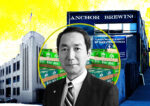Trending
Tech powers U.S. office market improvements
With absorption increasing and vacancy rates on the decline, the U.S. office market is strengthening. But the slow job growth in the last six months could be the harbinger of another slowdown. It’s a similar story to the one shown in New York City office market reports of late.
According to a third-quarter report released today by Jones Lang LaSalle, the office market absorbed about 9.4 million square feet in the third quarter, bringing year-to-date absorption to 24.5 million square feet. That’s 75 percent more than was absorbed during the first three quarters of last year, thanks largely to cities with clusters of technology firms.
Simultaneously, vacancy rates dipped below 18 percent for the first time in more than two years, dropping three-tenths of a percentage point to 17.8. Rents rose 30 cents per square foot nationwide to $27.74. Leasing activity in the third quarter dropped 12 percent from the prior-year quarter.
While that paints a relatively positive picture of the market, JLL said it is wary moving forward as the country has added just 40,000 jobs per month since April.
“We typically see transactions slow during the summer months,” said John Sikaitis, director of research at JLL. “However, this slowdown in leasing volume was compounded by the declining confidence levels of senior executives who have once again put hiring and growth plans on the sidelines.”
The exceptions to this expected slowdown are areas where the technology sector is booming, such as San Francisco, Silicon Valley, Denver and Seattle. Combined with Austin, Dallas, Houston and San Antonio, those areas accounted for 10.1 million square feet of occupancy gains, or about 41 percent of the national total.
Like other recent reports, JLL notes that New York City’s office market is faring well as rents in trophy buildings have returned to near-peak levels. — Adam Fusfeld




